May 24, 2025 | 16:25 GMT +7
May 24, 2025 | 16:25 GMT +7
Hotline: 0913.378.918
May 24, 2025 | 16:25 GMT +7
Hotline: 0913.378.918
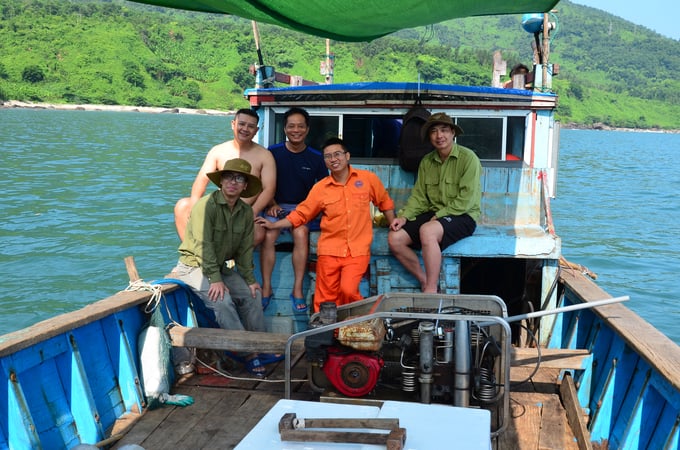
Delegation of scientists from the Research Institute for Marine Fisheries. Photo: Cong Dien.
From Ha Tinh to Hue, people know that dead fish are floating on the sea surface, but few know that about 90% of corals have died upstream and 60% in downstream areas such as Bai Ca, Lang Co.
Corals create vast, beautiful reefs, but when they die, they are smashed by the waves as if they never existed, leaving only a sandy beach on the sea floor and a thick layer of dust.
After more than seven years of the Formosa incident, the seas of 4 central provinces are still affected. The Institute of Seafood Research did not choose polluted watershed provinces, only Hue and Quang Binh, to restore corals and avoid dying after planting.
At Bai Chuoi, nearly an hour from Lang Co by train, fisherman Le Van Tho estimated that the amount of coral underwater was only about 30%.
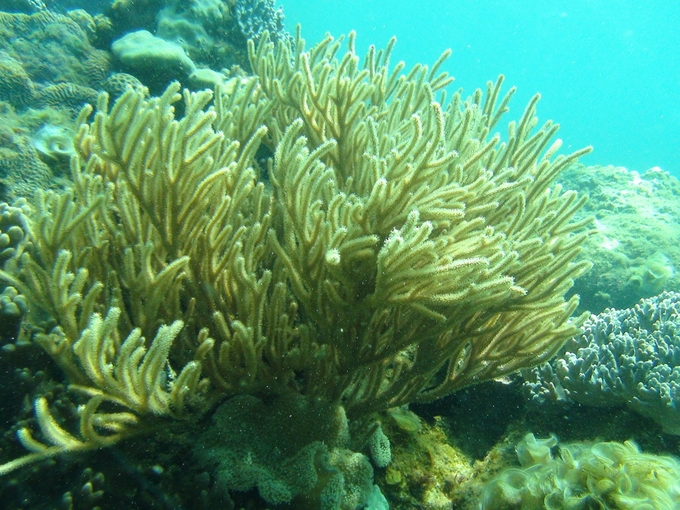
Coral in Cu Lao Cham in 2011, few sea areas still have such scenes.
To recover, corals after being chiseled from the cluster, divers will hold each branch and put it in a basket. Arriving on the boat, scientists had to continuously scoop sea water into the coral foam box to prevent them from being exposed to sunlight. Thanks to coral reefs starting to recover, aquatic resources in Banana Beach become more abundant.
Tho fishermen try to get fishing bait. In about half an hour, he caught two fish weighing 4kg. By noon, 2 Styrofoam boxes were full.
Meanwhile, scientists from the Institute of Seafood Research dived into the sea to transplant corals and did not emerge until more than 1 pm. Everyone was tired, struggling forever to remove the equipment weighing several tens of kilograms to enter the compartment.
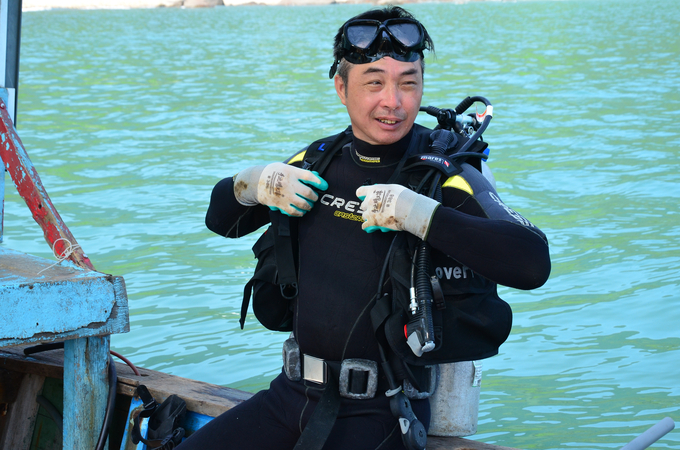
Wear equipment to prepare to enter the water. Photo: Duong Dinh Tuong.
Lunch is cooked quickly and served in the middle of the boat. The tray is two styrofoam boxes that are used to store coral seeds. There were no chairs, so everyone sat right on the side of the boat. While trying to swallow, water from the ear and water from the nose of the scientists flowed into a stream. After eating, the brothers returned to the sea to continue working.
After the Formosa incident, the Research Institute for Marine Fisheries conducted additional surveys and assessments of the recovery of aquatic ecosystems and aquatic resources in 4 provinces of Ha Tinh, Quang Binh, Quang Tri, and Thua Thien - Hue.
They organized three surveys, surveys to collect data in the field. The scope of the study is in the coastal waters of the island to a depth of about 12-15 m in 8 coastal areas in 4 central provinces, including Hon Son Duong, Hon Chim (Ha Tinh); Hon La, Hon Nom (Quang Binh); Con Co (Quang Tri); Chan May, Hai Van - Son Cha (Thua Thien Hue), reefs from Le Thuy (Quang Binh) to Mui Lay (Quang Tri).
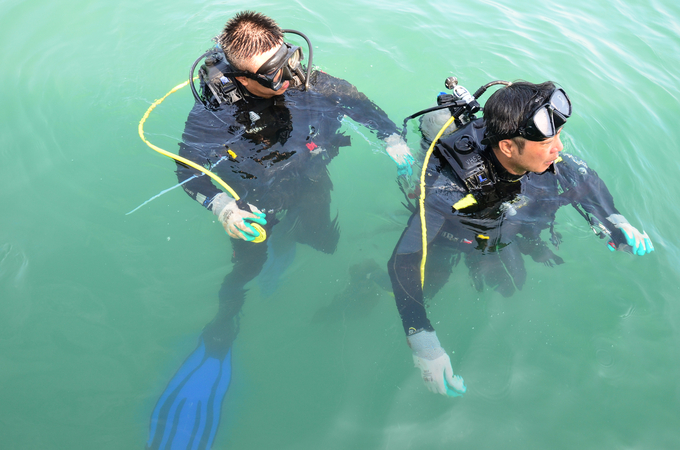
Team diving in pairs. Photo: Duong Dinh Tuong.
Immediately after the environmental incident, some coral reefs in Nam Son Duong, South Hon La, and North Hon Nom were almost destroyed. The living coral cover was 6.3%, 5.1%, and 5.8%, respectively. Next are the areas of North Hon La, West Hon La, North Hai Van-Son Cha, and North Hon Cha, with a decrease in coverage from 45% to 50% compared to before the incident.
At the time of the additional survey, most areas showed signs of recovery. The living coral cover tended to increase again, albeit slowly, especially in severely degraded areas.
Comparing the current status of coral cover with the time before the incident, the decrease was in Nam Son Duong (-85.53%), South Hon La (-88.78%), North Hon Nom (-83.13%) ), North Hon La (-48.98%), North Hai Van - Son Cha (-40.57% - 46.29%). In addition, 105 species of fish in this area's reef were recorded.
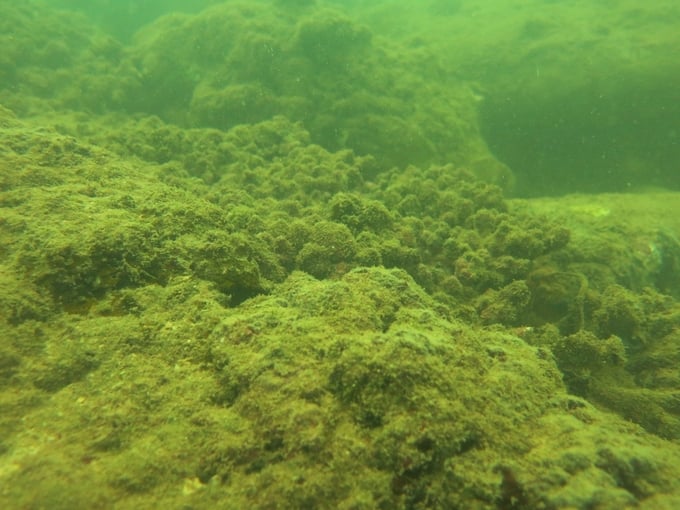
The seabed is empty with no corals.
Previously, the coral reefs in Bac Hai Van were lush, reflected in the rugged reef structure. However, since 2012, corals have decreased by 40%, and reef structures have been destroyed. That degradation rate is also roughly equivalent to other sea areas in Vietnam.
In the face of the widespread degradation of marine corals in Vietnam, the Party, State, Government, Ministry of Agriculture and Rural Development, and related ministries, departments, and branches pay special attention to the restoration.
The project "Building a technical process for culturing hard corals in Vietnam's waters" was born in that situation. The goal is to develop a coral restoration process that can be applied uniformly throughout the country.
Scientists from The Research Institute for Marine Fisheries are chiseling and separating coral varieties in the waters of Hai Van-Son Cha.
In Vietnam, coral restoration studies are carried out mainly by seed fragmentation, with group size (over 10cm) and direct inoculation. There are two models: recovery on dead coral and recovery on artificial coral reefs.
According to research by the Institute of Fisheries Research, scientists will have to plant about 2,500-3,000 coral colonies and protect the model on an area of 1 ha of water surface.
"The big coral reefs are like a tropical jungle under the sea. Just like the forest fire on the shore, the sea "burns" like that. We dived and saw scattered coral reefs, 100% dead, looking very mournful", Master Hieu pouted.
Mr. Nguyen Quang Vinh Binh - Director of Thua Thien Hue Fisheries Sub-Department, said that the local authorities consider the restoration of corals in Hai Van - Son Cha waters as both an urgent and a long-term task.
Translated by Ha Phuc
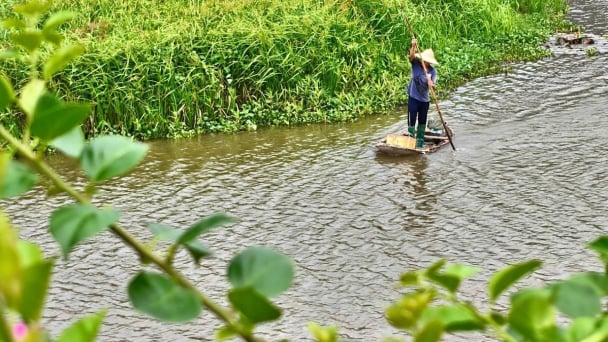
(VAN) In the tranquil wetlands of Van Long, there are quiet souls who guard the forests, nurture the waters, and oversee every bird and troop of langurs as protecting the essence of a living heritage.
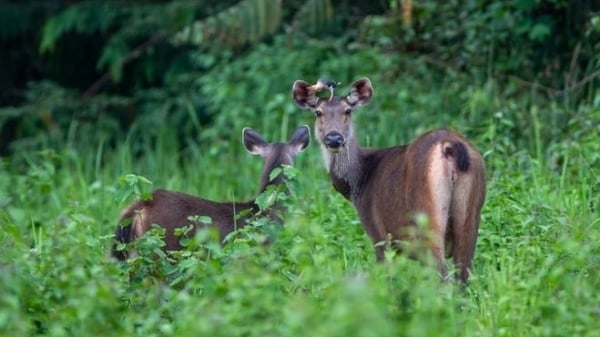
(VAN) WWF, GIZ, IUCN, UNDP call for biodiversity conservation and sustainable development must be regarded as a unity in strategies for a green future.
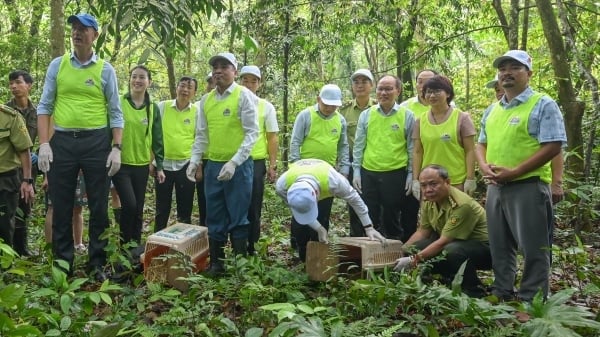
(VAN) On celebration of International Day for Biological Diversity, Deputy Minister Nguyen Quoc Tri called for practical actions to address nature and biodiversity conservation.

(VAN) Dr. Hoang Thi Thanh Nhan – Deputy Director of the Nature and Biodiversity Conservation Agency – highlighted this on the International Day for Biological Diversity, May 22, 2025.
![Ho Chi Minh city adapts to climate change: [2] Accelerating action](https://t.ex-cdn.com/nongnghiepmoitruong.vn/608w/files/chiqk/2025/05/22/4024-4220-bien-doi-khi-hau-1-100626_766.jpg)
(VAN) Clearly recognizing the challenges posed by climate change, Ho Chi Minh city has swiftly shaped its policies and implemented practical solutions to adapt.
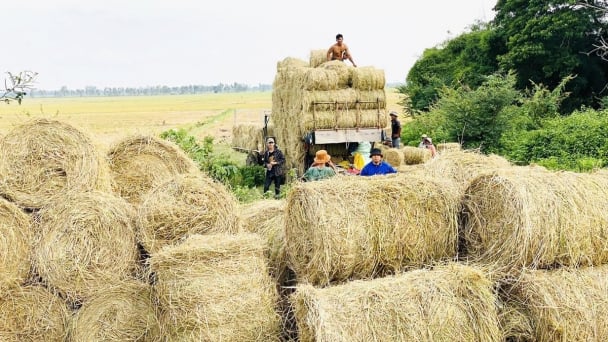
(VAN) Rice straw is no longer just a discarded byproduct, but it is becoming a green resource that helps farmers in the Mekong Delta reduce emissions and promote circular, sustainable agriculture.
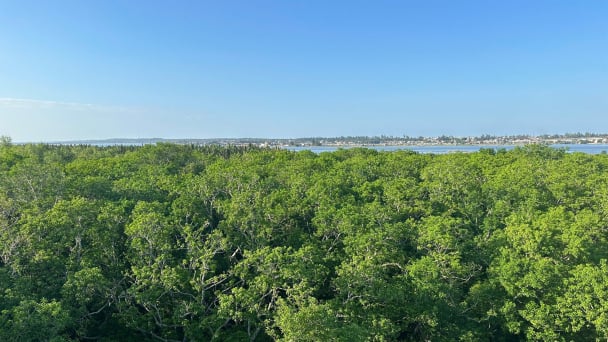
(VAN) Other Effective Area-based Conservation Measures (OECMs) are solutions that contribute effectively to achieving the goals of the Kunming–Montreal Global Biodiversity Framework.